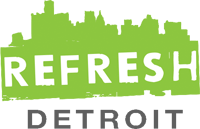For our July meeting we were lucky enough to have Colleen Case and Maria Gosur from Schoolcraft College to talk about the Web Design Process.
The talk was about a framework for the web design process, taking 45 hours of teaching time and compressing it to 45 minutes. They discovered 40% of the population is re-tooling skills to the web, while 60% have grew up with the skills and looking for something advanced. Colleen is an interactive teacher, shifting from sage on the stage to guide by the side.
“The medium is the message”
- Marshall McLuhun, 1964
The content of the communications is blended with the medium. With the way it is sent, the interface is content.
Framework for team dynamics
Process (stages of development that are happening concurrently)
- Define the project
- Scope of the project
- Information architecture
- Build and integrate
- Site publishing
[blackbirdpie url=”https://twitter.com/philltran/status/91287274905546752″%5D
Define the project
- Figuring out who is on the team and what they do
- It’s important to define these up front
Scope of the project
- Common vision, defining an audience, review the data, technical needs
- Audiences can mean more than one
- How do we talk to the audience as a human
- Persona’s should have names and refer to them as actual individuals
- How can we best deliver your content to your audience
- The scope of a website doesn’t end when it launches, it stretches for years after.
- You can’t jump ahead in the process
Information architecture
- Looking at all the information and start recognizing patterns
- Sticky notes are a great way to visualize information to recognize patterns
- Chunking is grouping information
- Queueing is prioritizing information
- Filters is creating unique access for multiple users
- Abstracting is creating a consistant look from page to page to orient the user and allow them to get around
- Where does the complexity of the site lie? In the back end or frontend for the user?
[blackbirdpie url=”https://twitter.com/philltran/status/91291238355046400″%5D
Build and integrate
- File management and naming conventions
- Optimizing multimedia
- Populating content
- Site testing, not just functional but also the ascetics
Site publishing
- Site Launch
- Training, Updates, Maintenance
- Debrief
[blackbirdpie url=”https://twitter.com/refreshdetroit/status/91297540523298816″%5D
Things often overlooked
Your client knows the problem. Design is problem solving.
The project manager talks to the client so there is a single voice and ears for the entire project. One person can have multiple roles.
The content expert might not always be client. Writer/Editor. Usability Testing, Information Architect. Technology Researcher.
Visual designers are the person on the team that everyone’s favorite. Photographer. Illustrator. Multimedia Designer. Bringing the illustrator in early on can yield a lot of illustrations that explain the process to get everyone on the same page. It can expand understanding.
Technical designers look at everything that makes the website possible. Database developer. IT security specialist.
Usability designer. Test/focus group coordinator. Search engine optimization manager. Social media manager. Site analytics. Transition coordinator.
We consume web content as snacks, not meals. We scan, pick and choose what to interact with.
More Information: http://designprocessmoreorless.com/
